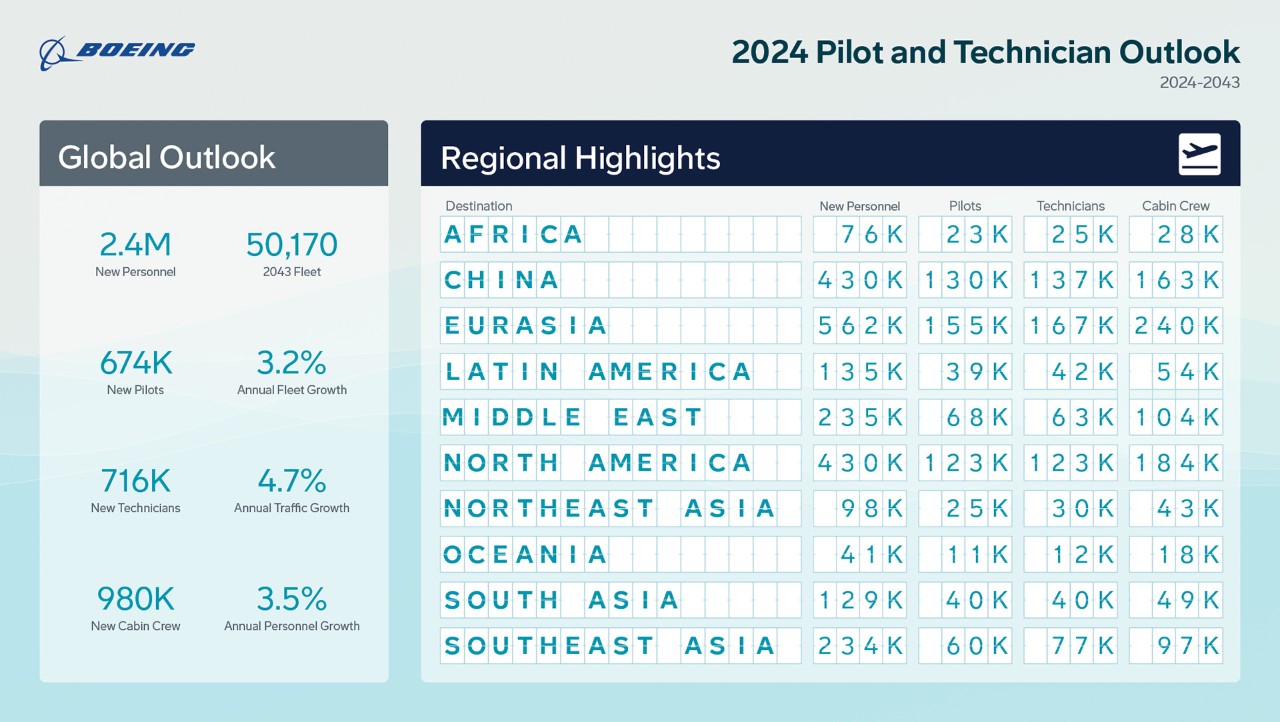Global air travel demand and traffic have nearly recovered and returned to pre-pandemic levels in the past year. With the return to these traffic levels, effective training and an adequate supply of personnel remain critical to maintain the health, safety and prosperity of the global aviation ecosystem.
As commercial air travel returns to its dominance in the post-pandemic era, the demand for training and related services has accordingly shown signs of faster recovery, but the industry still faces lingering challenges in meeting this demand. Among them are insufficient training capacity to support significant personnel shortage and the lag time required to bring personnel online while continuing to prioritize safety. To support the rapid recovery and growth driven by expansion of global fleets, the aviation industry will need a long-term strategy that addresses upcoming labor challenges. Investment in early career-development programs and outreach efforts that spark excitement among future aviators will be essential to a healthy aviation market for years to come.
Long-term demand for newly qualified aviation personnel remains strong, as 674,000 new pilots, 716,000 new maintenance technicians and 980,000 new cabin crew members will be needed to fly and maintain the global commercial fleet over the next 20 years.
 USA
USA




